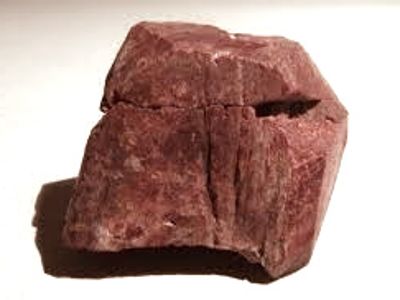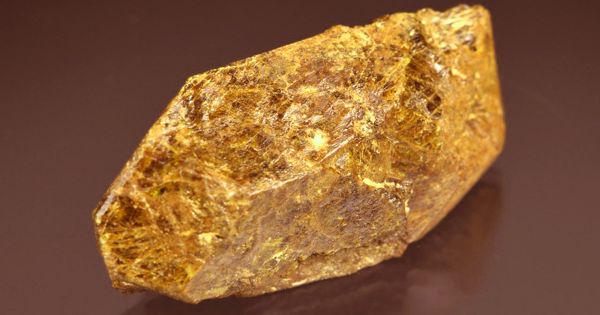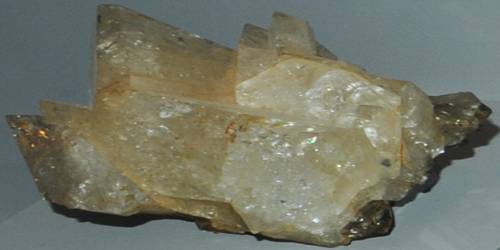Monazite is a reddish-brown phosphate mineral that contains rare-earth elements. It is a rare phosphate mineral with a chemical composition of (Ce, La, Nd, Th)(PO4, SiO4). Due to variability in composition, it is considered a group of minerals. The most common species of the group is monazite-(Ce), that is, the cerium-dominant member of the group. It is named for the Greek work “monazein”, meaning alone, alluding to isolated crystals of the original occurrences of this mineral.
Monazite is radioactive due to the presence of thorium and, less commonly, uranium. The radiogenic decay of uranium and thorium to lead enables monazite to be dated through monazite geochronology.
General Information
- Category: Phosphate minerals
- Formula: (repeating unit) (Ce, La, Th)PO4
- Crystal system: Monoclinic
- Crystal class: Prismatic (2/m) (same H–M symbol)
- Color: Reddish-brown, brown, pale yellow, pink, green, gray.

Monazite – a rare phosphate mineral
Properties
Monazite crystals often have multiple distinct zones that formed through successive geologic events that lead to monazite crystallization. It is translucent and rarely seen in large grains or as well-formed crystals. It occurs usually in small isolated crystals. It has a hardness of 5.0 to 5.5 on the Mohs scale of mineral hardness and is relatively dense, about 4.6 to 5.7 g/cm3.
- Crystal habit: Commonly as prismatic or wedge-shaped crystals
- Twinning: Contact twins common
- Cleavage: Distinct on [100] poor on [010]
- Fracture: Conchoidal to uneven
- Mohs scale hardness: 5.0–5.5
- Luster: Resinous, vitreous to adamantine
- Streak: White
- Diaphaneity: Translucent to opaque
- Specific gravity: 4.6–5.7 (4.98–5.43 for monazite-Ce)
- Optical properties: Biaxial (+)
Occurrences
Monazite occurs as accessory minerals in igneous, metamorphic, and sedimentary rocks. It usually occurs in small isolated grains, as an accessory mineral in igneous and metamorphic rocks such as granite, pegmatite, schist, and gneiss. It is an important ore for thorium, lanthanum, and cerium. It is often found in placer deposits. India, Madagascar, and South Africa have large deposits of monazite sands. The deposits in India are particularly rich in monazite.
















